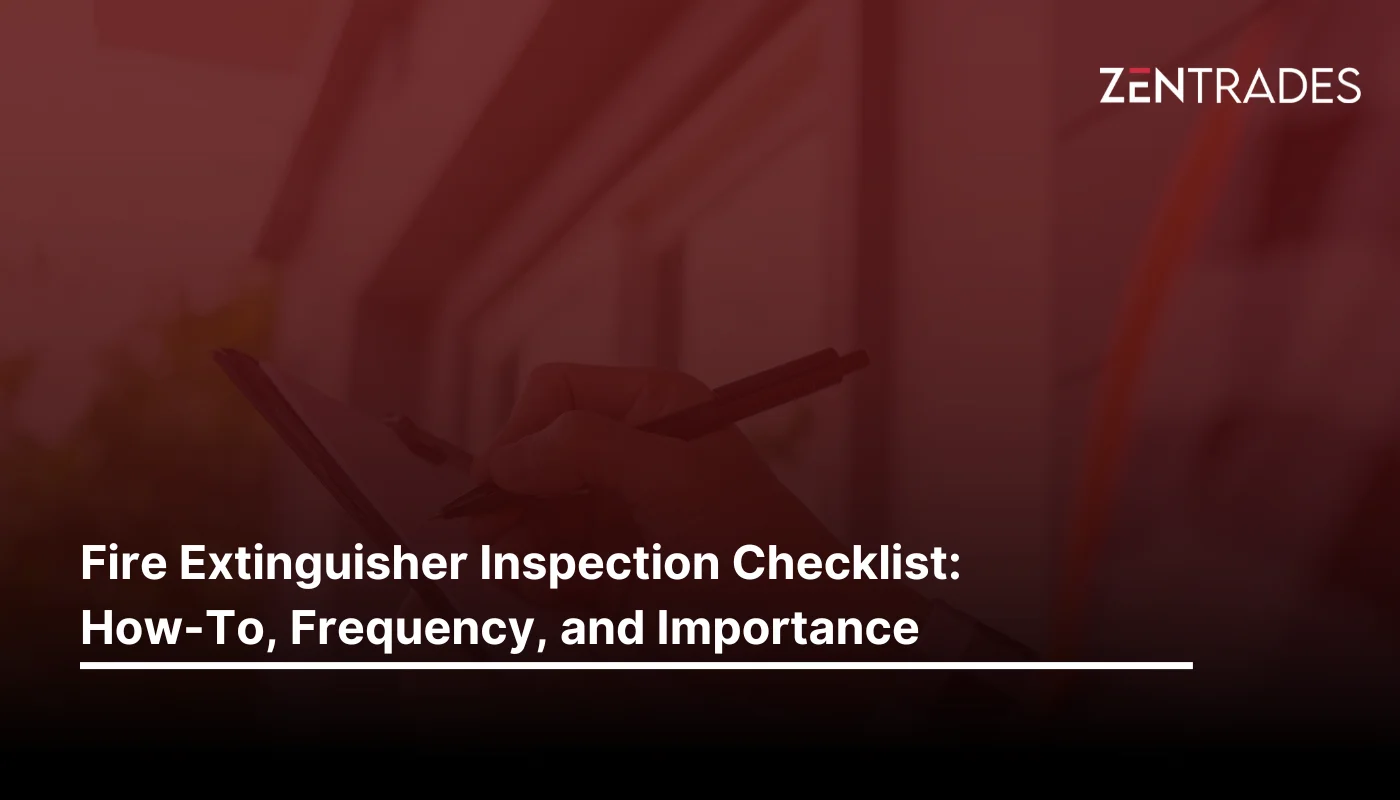Fire Extinguisher Inspection Checklist: How-To, Frequency, and Importance
- Field Service Management
- 9 Min Read
Fire extinguishers are essential to fire safety and protection against unprecedented fire hazards like electrical fires. Often the first protection available against small fires, the importance of maintaining this tool is self-explanatory. Maintenance leads to safer environments, whether residential, corporate, or a public area. Not only this, but checklists for fire extinguisher maintenance are a policy mandated to be followed by the likes of OSHA and the NFPA.
This article delves into the types of inspections necessary on fire extinguishers, the frequency of these inspections, the importance of checklists, and the necessity of inspections.
Here What We Cover
Understanding Inspection of Portable Fire Extinguishers
Fire extinguisher inspection is the process of ensuring that fire extinguishers are operable and usable in the event of a fire incident. Inspections range from regular visual inspections to monthly, yearly, and long-term inspections, each with its own objectives and procedures.
A fire extinguisher inspection checklist is the documentation used by fire inspectors and technicians when they conduct an inspection to account for the inspection details and what needs to be done, if anything, to repair and replace the extinguisher system.

Use our free estimate template now
Make winning quotes in minutes—for any industry and any job.
Monthly Fire Extinguisher Inspection Checklist
The procedure of inspecting a fire extinguisher monthly is a frequent procedure that anyone can do with general knowledge of what needs to be checked for during this inspection. Monthly visual inspections are the usual norm and so here is a sample checklist of what needs to be checked during this monthly procedure of a visual inspection,
Accessibility: No obstructions to the immediate access and operable range of fire extinguishers in an environment.
Instructions: General guidelines pamphlet with operating instructions on how to inspect a fire extinguisher.
Pressure Gauge: Check whether the pressure gauge is working correctly. You can check if the reading is in the green zone or take it to a professional if in the red zone.
Weight Check: Check the weight of the fire extinguisher to check its fullness and if it needs refilling
General Condition: The condition of the fire extinguisher, such as rusting, any obvious physical damage, or leakage.
Tamper Seal: Checking the condition of the tamper seal and the locking pin.
Location: The general location and visibility of the fire extinguisher.
Inspection Tag: Dating when you’ve done the inspection and checking the tag for the last professional service date.
Additional Tips
Employee Training
To execute this properly in work environments, employees can have a small training session with a professional who can explain what needs to be done for regular fire extinguisher inspections.
Documentation
Documenting every inspection process is very important for keeping track of your inspection frequencies, learning from your last inspection, and valuable information for future, more critical inspections by official technicians and inspectors.
Annual Fire Extinguisher Inspection Checklist
Yearly checks are a more thorough inspection by trained professionals to check for integral factors that can’t be visually graded. Physical parts of the extinguisher are tested and repaired if necessary. This can only be done by fire professionals who know their policies and extinguishers.
Professional Checklist Structure
An annual fire extinguisher checklist is more detail-oriented than a monthly inspection format due to its more detailed approach to the extinguisher’s health. Here is a comprehensive checklist of an annual inspection,
Recalled Equipment: Make sure that the fire extinguisher has not been recalled.
Hanging Brackets: Check that the hanging brackets on the pressure gauge are in good condition.
Hose: Remove the hose and inspect for any blockages within the body.
Expelling Agent: Check if the extinguisher needs a refilling if it has been used.
Handle: Checking the integrity of the handle, anti-tamper seal, and the pull pin.
Inspection Log Tag: Updating the inspection tag and ensuring that the extinguisher does not need an internal examination or hydrostatic testing.
Get posts like this in your inbox.
Keep learning how to run a 5-star business with our bi-weekly newsletter.
Long-Term Fire Extinguisher Maintenance
6-Year Fire Extinguisher Inspection
This inspection focuses more on the external examination of the fire extinguisher. The professional ensures all the tool’s components, such as the nozzle, pull pin, valve, discharge hose, pressure gauge, tamper seal, and the actual extinguisher body, are in good condition or need replacement.
12-Year Hydrostatic Testing Inspection
This is an external and internal examination of fire extinguishers, with a thorough examination of the internal workings of the extinguisher when it needs to be refilled with its expelling agent after being hydrostatically tested and verified for usage.
The Importance of Fire Extinguisher Documentation
The documentation done during every inspection (monthly, annually, long-term) keeps track of the inspection and the actual condition of the extinguisher. If the proper notes are not taken, an inspection could lose all meaning, and the next inspection would be inaccurate, increasing the chances of harm and decreasing dependability on the effectiveness in an emergency.
More importantly, documentation can become complicated when you take into account the number of inspections and the amount of data that needs to be taken down and organized for better analysis of the situation, dawning on the importance of digitizing data and being able to store data with no physical paperwork.
Customizable, Digital, and Instantly Usable Checklists
A fire protection company like yours, with inspectors and technicians, understands the difficulties in conducting frequent inspections and the importance of documenting the process. Where it becomes problematic is the frequency and amount of work involved for every technician.
That’s why we created our inspection software product, ZenFire, with hundreds of instantly usable checklists that are customizable for your preferences.
Not only can this product help you with those checklists, but it also makes the whole inspection process, like scheduling, dispatching, and invoicing, much easier on your shoulders. If you think your technicians need something better in their hands to make their inspections easier and less time-consuming, sit down on a call with us and see what we can do for you.

Explore a better way to grow your business. Book a free demo now!
Get organized, win jobs, and wow customers.
Book A Free Demo with ZenTrades Today!
Related Reading
Why Your Field Software Management Software Needs QuickBooks Integration
ZenTrades Why Your Field Service Management Software Needs QuickBooks Integration Read More Request Demo...
Read MoreZenTrades How To Manage Electrical Service Agreements Like...
Read MoreZenTrades The Best 5 Jobber Alternatives In 2023...
Read More

